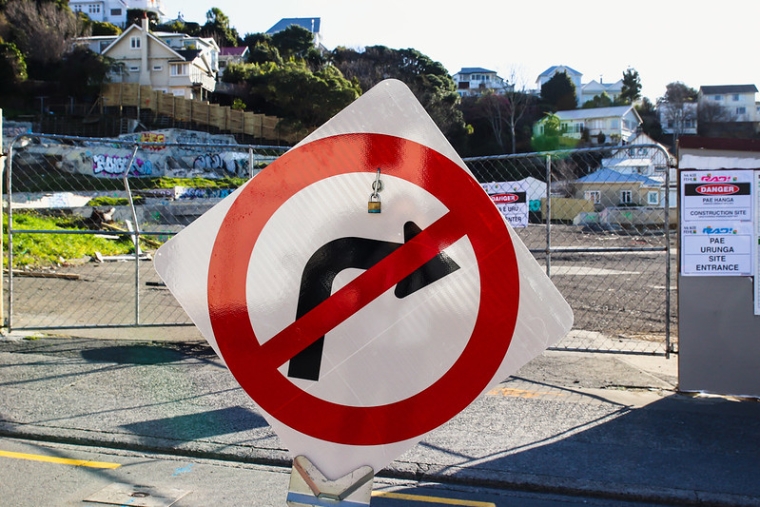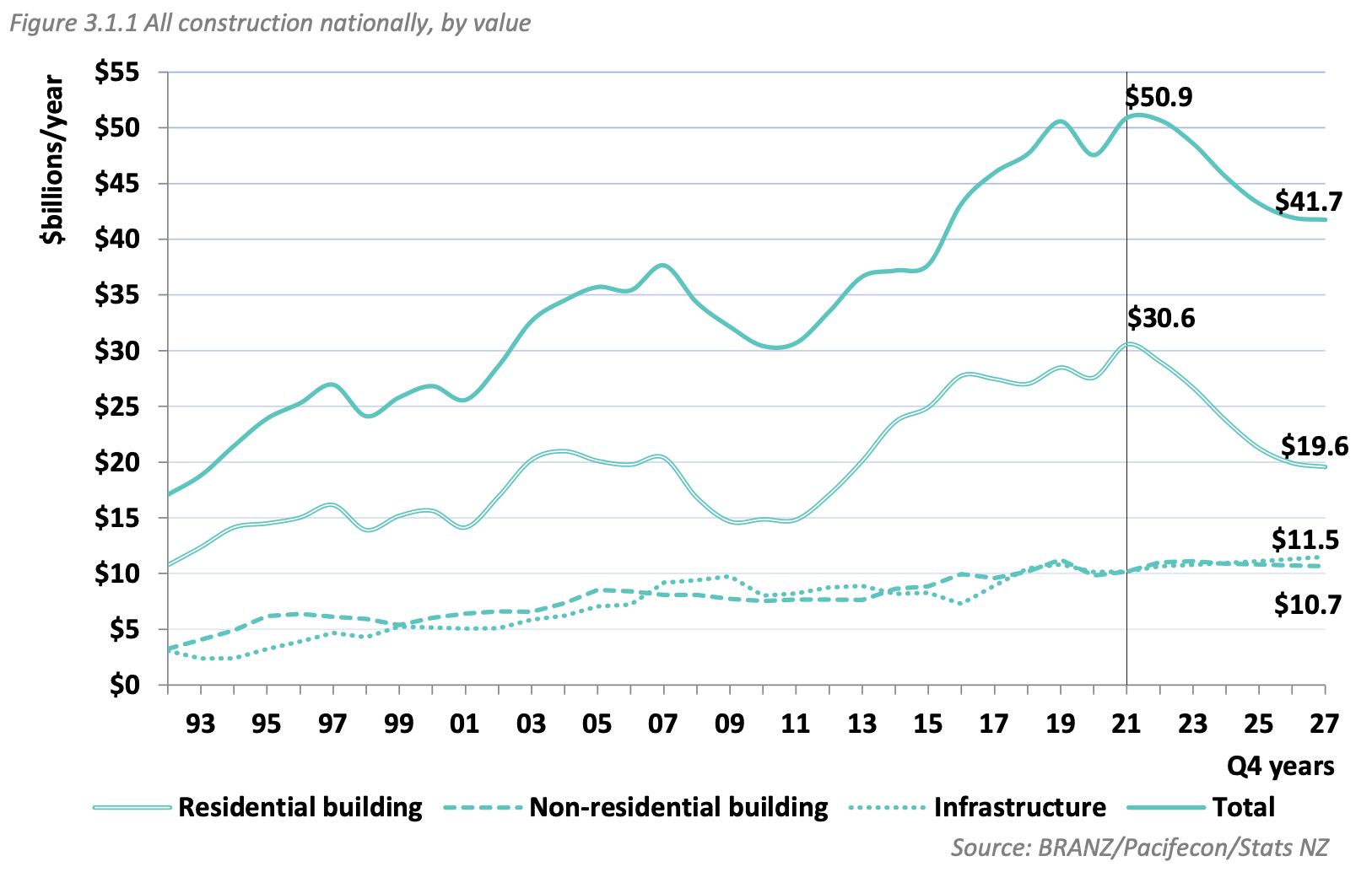
The construction industry's main annual forecast has switched to seeing an overall fall of $9 billion per year in activity by 2027, completely driven by an $11 billion fall in residential construction, thanks to higher interest rates and a collapse in confidence because of falling house prices.
BRANZ and Pacifecon have published their 10th annual National Construction Pipeline Report, which showed they expect house building work to slump by more than a third, or $11b, to $19.6b per year over the next five years as 16,000 fewer consents in Auckland are now expected.
“We forecast that Auckland reached its peak in dwelling consent activity in 2021. The forecast is for a slight decline in the number of consents in 2022 before falling to 13,730 at the end of the forecast period," BRANZ and Pacifecon said in the report.
"Just under 95,000 dwelling units are expected to be consented in the six years from 2022 to 2027 (111,000 were anticipated over six years in the 2021 report and 73,000 in the 2020 report),” they said.
The report forecast total construction activity would fall steadily from a peak of $50.9b in 2021 to $41.7b in 2027, meaning the fall is completely driven by the house-building sector.
Auckland is the main driver, with consents falling from 20,529 in 2021 to a low of 13,680 in 2026.
“2021 can be characterised as the year of recovery after the lockdowns of 2020. Activity in the residential sector was strong, buoyed by high levels of consenting and work that was planned to be completed in 2020. However, the impact of material and labour constraints can be seen across the regions as activity has plateaued throughout 2021," the BRANZ and Pacifecon Report said.

16 Comments
I guess that means that the price of building mats and asscoiated labour costs should fall accordingly.
It was late y'day when I posted about the China oversupply of housing. You would think there's plenty of building mats and labout going for a song soon.
Fifty million empty flats threaten to plunge China’s troubled property market further into crisis, warns think tank
https://www.scmp.com/business/china-business/article/3188781/fifty-mill…
Perhaps the govenment could step in with a ministry of works style housebuilding scheme to keep building levels up as the downturn co tinues.
Call it NZbuild. Kiwihome. Idk, the pointy heads in marketing are sure to come up with something.
Then you could rename the ITM Fishing Show to
The Ministry of Works Fishing Show.....
Sums up the problem
Much of this construction boom was fueled by unsustainably high house prices anyways.
New developments over the last 3 or so years can best be described as if homebuilders were playing a game of Tetris trying to pack as many overpriced shoeboxes in the tightest space.
A colleague paid nearly a million for a 3-bdr townhouse in Karori (WLG) with no car park and open space. This house shares land with 16 other sardines perched on a steep street with sharp bends and no available on-street parking. To get home from the nearest dairy or bus stop, you'd have to walk uphill for 12-15 mins, depending on individual lung capacity, and the last ~400m is a narrow, bendy stretch has no footpath and barely enough room to drive.
Hopefully, the likes of Simplicity, councils and KO take over the excess capacity and ramp up social housing/build-to-rent construction.
Sounds delightful, and a reason why we left Wellington. I think sunk costs should apply to Wellington. Let's give it up.
There is a certain joy to be had thinking of the beltway living like that.
If you have a problem with hills, don’t live in Wellington. Leave it to the people who value what Wellington offers.
Residential building will fall away quite a bit quicker than their graph suggests.
Sales are down 80% YOY.
What the housing boom isnt going to last forever?
Why would anyone build houses that people cannot afford to buy, developers and building companies will be closing and some will go bankrupt crashing the market even more.
BTW, the graph shows $ value of construction.
Given inflation, the graph implies that residential construction levels will fall even below the lows of 2009-2011...
housing shortage overreaction also drove this. not hearing much about that these days.
Very few believe there was an actual housing shortage. That was a myth used to disguise the real problem.
When a build is $4,000 a sq m, its far too high. A lack of good analysis and spruiking, and lots of conjecture.
Still quite a lot of development out my way. I drive past this one every day https://universalhomes.co.nz/communities/west-hills/ I think the more established players will be fine. Happy to see any improvement in the quality of NZ housing stock

We welcome your comments below. If you are not already registered, please register to comment
Remember we welcome robust, respectful and insightful debate. We don't welcome abusive or defamatory comments and will de-register those repeatedly making such comments. Our current comment policy is here.